What is the Graston Technique®?
Our patients affectionately refer to the Graston Technique® instruments as “butter knives!” It’s a treatment they hate to love, but the results speak for themselves. Many famous athletes swear by the technique including Olympic swimmer Michael Phelps.
Does THE GRASTON TECHNIQUE work?
Historically, The Graston Technique® has had positive outcomes in 75-90% of all conditions treated. It is equally effective on restoring function to acute and chronic injuries, and pre- and post-surgical patient. Click here for Outcome Summary Data of the 17 most common diagnoses.
HOW DO GRASTON INSTRUMENTS WORK?
In the healing process, our body attempts to repair muscles, tendons and ligaments with “scar tissue,” much like a scar that forms on the skin when you have scraped your knee.
The Graston Technique ® is a form of soft tissue mobilization that utilizes six stainless steel instruments to glide along a patient’s muscles, tendons, or ligaments. These tools promote increased blood flow which ultimately breaks up scar tissue, fascial restrictions, and adhesions which tend to be weaker and less flexible than undamaged tissue.
It is not meant to replace a clinician’s hands, but to complement them by substantially improving the ability to detect and treat dysfunction.
DOES GRASTON HURT?
The affected area is often sensitive so initially the Graston Technique can be a bit uncomfortable, but with continued treatment patients may even indicate it feels good. The patient will work with the therapist to determine the appropriate amount of pressure for them, as too much can actually be detrimental to the healing process. This is why it is important to have a trained professional perform this treatment.
What is the Graston Technique used to treat?
Graston Technique® has been clinically proven to achieve quicker and better outcomes in treating both acute and chronic conditions including:
Achilles Tendinitis/osis (ankle pain)
Carpal Tunnel Syndrome (wrist pain)
Cervical Sprain/Strain (neck pain)
Fibromyalgia
Lateral Epicondylitis/osis (tennis elbow)
Lumbar Sprain/Strain (back pain)
Medial Epicondylitis/osis (golfer’s elbow)
Patellofemoral Disorders (knee pain)
Plantar Fasciitis/osis (foot pain)
Rotator Cuff Tendinitis/osis (shoulder pain)
Scar Tissue
Shin Splints
Trigger Finger
Women’s Health (post-mastectomy and Caesarean scarring)
Who can perform the Graston Technique?
Only clinicians who have been trained and accredited in the Graston Technique® Basic course are qualified to obtain the Graston Technique® instruments and apply the technique to treat patients.
Graston Technique Success
Last week we discharged a patient who had been suffering from chronic neck pain after a car accident five years ago. After only four sessions utilizing the Graston Technique®, she had complete relief and could not believe the results. She said she could actually feel the scar tissue being broken up and began craving the twice weekly treatments.
But do i need physical therapy??
Taking the plunge to get a physical therapy evaluation is a big decision. We’ve narrowed it down to 10 questions…
More Frequently Asked Questions
The Graston Technique® website does a good job of answering some other FAQs.
WHAT OTHER TREATMENTS COULD WORK FOR YOU?
Active Release Technique - click to read more
The McKenzie Method - click to read more
Kinesio Taping - click to read more


